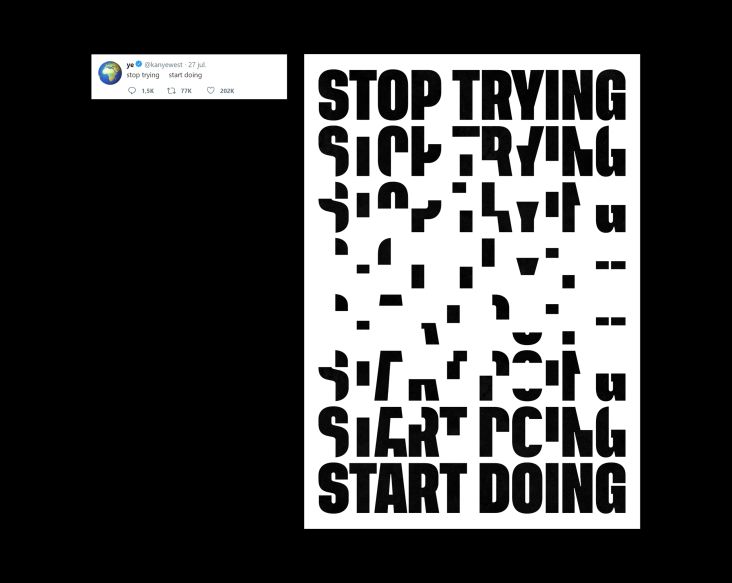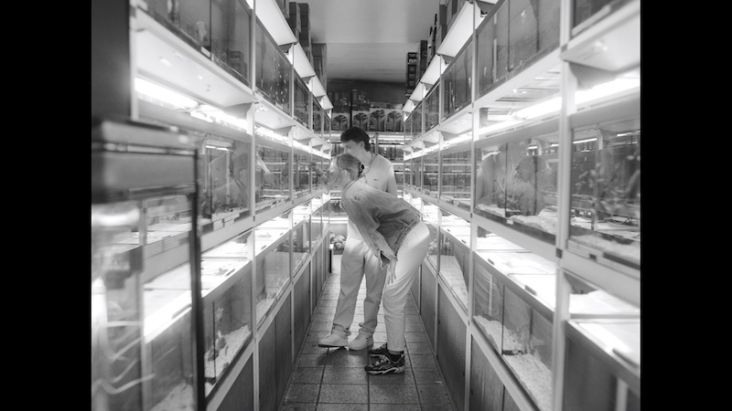How to transform difficult clients into people you love working with
Play your cards right, and your worst client relationships can eventually become your best. These tips from the Creative Boom community will help you on your way.

Image licensed via Adobe Stock
We've all had clients that have made our lives a misery. And sometimes, the best thing to do is just to cut them loose. But in uncertain economic times, it's best to avoid the nuclear option if possible. Because let's face it, keeping existing clients is always easier than finding new ones.
Furthermore, some of the worst client relationships can eventually turn out to be some of the best. Because when you go through all the potential problems at the start and come out the other side with a deeper, mutual understanding, that's when a truly secure and trustworthy client relationship can begin.
To help you achieve that in practice, we canvassed the Creative Boom community for their collective wisdom and experience. We share some of their best tips in the article below.
1. Take a breath
When a client is being difficult, the first and most important thing to do is actually nothing.
You'll normally feel the urge to rush to judgment and react in a hot-headed manner. But that will almost certainly inflame the situation and make things worse. So instead, give yourself time and space to calm down.
"Never respond to a difficult client in the heat of the moment," says design and motion director Chris Bain. "Step away from your email for 30 minutes before responding. A challenging client will always be difficult, so it's best to try and be friendly and pragmatic to the end. You catch more flies with honey."
2. See things from their point of view
Yes, clients can sometimes be maddening, insanely irrational, and act like total jerks. But if we're honest, we've all been jerks at one point in our lives or another. And usually, there's some underlying cause to it. So rather than just getting mad, consider what might lie beneath the surface of a specific argument.
"Working out why a client is challenging in the first place is a job in and of itself," says designer and artist Duncan Buchanan-MacDonald. "Often, there's an underlying fear or insecurity that's not being expressed, but it can come across as ego in the heat of the moment. So you need to step back and work out what the fear is, together."
If you're working as a creative professional, there's a good chance you already have an attuned sense of empathy, so put it to work. As brand strategy director Paul Mark Bailey points out: "Marketers have a difficult job, with pressures coming down from senior management, across from finance, and up from their own team. Such a small part of their day is working with you. So try and make it a pleasant experience."
Often that means moving beyond the letter of client communications and listening to your intuition. "When your 'Spidey sense' is tingling, figure out what’s been left unsaid," says Tom Daplyn, director of design company Active Matter . "There's usually a good explanation for frustration, but it's not always rational."
3. Talk regularly
Prevention is, of course, better than cure. So the best antidote for difficult clients is reliable and consistent communication.
As Hayley Yates of Fiasco Design puts it: "Regular calls or face-to-face meetings allow any frustrations to come up organically; project specific or otherwise. It allows you to address individual points and resolve them at the time, rather than letting them become bigger than they need to."
Also, think about the best ways to communicate with clients. As photographer James Lawley points out, "Conversation on the phone, or in person, is always 100 times clearer that an email thread and there's less chance of misunderstandings, particularly over anything contentious."
Multi-disciplinary designer Chris Wilson takes a similar view. "Email tone can be misinterpreted, but a face-to-face or video call usually resolves most issues," he says. "When there's a human connection, it makes for a more empathic and understanding environment."
4. Set boundaries
As well as listening closely to the client's needs, you also need to communicate your own needs as a provider clearly and succinctly. So set clear expectations and boundaries for what you will (and won't) provide, agree on a timetable and schedule everyone can keep to, and put in place a system for increasing scope and agreeing on extra costs, when appropriate.
Artist Nicola Anthony has found this approach to be vital in her dealings with clients. "Working with artists involves many unknowns, so I find communication is key," she explains. "Keep them informed of your plan, process and progress. No one likes to feel out of control, so clients who feel heard are more confident, calming all manner of difficult situations."
5. Encourage feedback
In our fantasies, clients would just set the brief, let us get on with the work, and then shower us with praise when we deliver the final results. In truth, though, that approach is more likely to end in acrimony.
It's much better, if a little more painful, to check in with the client at each stage of the project. And that means not just expecting feedback but actively asking for it.
"From the very start, install some kind of regular feedback call, in both directions," recommends Jort Mentink of brand management consultancy VIM Group. "It's tempting to talk less, but you need to talk more when things are difficult. I always try to think how I can make my principal look good in front of their boss, not what I think is best."
Negative feedback can sting, of course. But that doesn't necessarily mean the client is being difficult; it could just mean that you haven't yet reached the best solution that keeps both of you happy.
6. Keep feedback relevant
You also, however, need to clarify what kind of feedback you're seeking. If all you're getting from your clients is "I don't like that colour", it's a sure sign you haven't explained to them what the feedback process is all about.
Art director and designer Khyati Trehan recommends: "Having a 'how to give feedback' slide in the deck at the end or the beginning, with notes on staying away from giving granular feedback and responding to the overall direction instead. Circle back to the strategy deck or the core idea whenever a client gives feedback based on their personal taste. It helps to move back the conversation to the 'whys' and bring some objectivity."
Khyati adds, "A Statement of Work mapped to timelines is a lifesaver when a client may ask for more than what was planned. A little 'remember what we talked about?' and 'capacity' chat come in handy."
7. Remove your ego
Negative feedback can sting, of course. But that doesn't necessarily mean the client is being difficult; it could just mean that you haven't yet reached the best solution that keeps both of you happy.
Here, as elsewhere, your personal emotions can make it difficult to see the wood for the trees. So one of the secrets to dealing with difficult clients is removing your ego from situations as much as possible.
So how do you do that in practice? "First up, remember that everyone has stuff going on," says niche brand strategist Penny Lee. "Try not to take blowups personally. Remain calm, listen and defuse drama. It's often a really simple thing underlying a bigger reaction. And that can even lead to a better relationship if you tackle the hard conversations."
"When things get heated, I remind myself that it's not personal," adds interior design blogger Stacey J Sheppard. "Everyone is trying to do their best. We are all under pressure and have challenges we are dealing with. Looking at difficult clients from this perspective changes how I interact with them, which often defuses the situation."
Copywriter and consultant Peter Halliday keeps things simple. "I remind myself that I'm in the business of making clients happy," he says. "The piece of work is a means to that end, not an end in itself. It helps me focus on what the client actually wants, rather than what I think they ought to have."
Clay artist and illustrator Clay Disarray adds: "I try to remind myself that true emotional intelligence involves seeing things from others' perspectives. For really challenging client projects, I leave a note somewhere prominent in the studio with: 'This is temporary' written on it."
8. Keep control of the process
Listening carefully to clients is vital, but that doesn't mean you should let them dictate. You still have to retain control over the creative process; indeed, that's what they should expect of you.
As media planner Josh Steel says: "Don't always assume clients know what they want: after all, that is why they have hired an agency. Get good at asking the right questions so you can help them find the answers when they're hard-pressed."
"We would never tell clients what we think they want to hear to win them over," says Jess Cook, client director at Robot Food. "It only makes life harder for everyone involved in the long run. Instead, you have to embrace those uncomfortable truths and address them head-on.
"Avoid bowling in to try and convince them that your ideas and opinions are both brilliant and right," she continues. "They probably aren't if you haven't really listened to what they have to say. The key is to be diplomatic but direct: demonstrate how you aim to solve a problem to deliver a better result for your common goal. It shows clients you're on their side, leads to constructive conversations, and ultimately establishes mutual trust and respect."
9. Be accommodating… up to a point
Keeping in control of the process means that while you're ready to meet clients halfway, you should never be willing to cave. In the words of illustrator Amy Lauren: "Do what you can for your clients so they can learn to trust you, but don't let them take advantage of your limited time."
So what happens if you can't convince them and you remain at loggerheads? Designer and illustrator Paul Phillips offers this advice. "If a client wants to make alterations you think will adversely affect the design, rather than trying to talk them out of it, try to think of three alternative ideas you can both get on board with. Don't argue: treat it like a problem that needs solving."
Web designer Mike Hindle says: "I always allow for a bit of good old-fashioned compromise, but only to a certain point. If the client asks for changes that I don't think will benefit the design, I'll explain why they might not work, how long they will take, and how much they will cost. The ball is then in their court, and they can choose to go ahead or not with the extra hours and cost."
10. Be prepared to walk away (but do it right)
But what if you follow all of the advice in this article, and it doesn't make the slightest difference: your client still acts like a jerk? Well, there comes the point where any reasonable freelancer needs to walk away from the client.
How you do so, though, is all-important. Certainly, don't drop them suddenly, especially if you're in the middle of a project. That will give them cause to complain, possibly in public, and ruin your reputation. Instead, do it in stages.
First, offer a friendly warning that you fear things might not be working out and that you need to review your partnership. Then ratchet up the pressure; for example, you might ask for a price review and up your rates. Follow our guide to ending things amicably for the full range of steps you could consider. Always tread carefully, though, as politics are always at play, and you don't want to make anyone look bad.
"There's lots to be said for walking away," says multi-disciplinary designer Craig Ward. "If you completely miss the mark on a project, either there was a problem with the brief or you're just not aligned creatively, which is totally fine."
Benji Mauer, a user researcher at ActBlue, agrees. "The idea of 'dealing with difficult clients' implies they're worth working with," he notes. "Sometimes, they aren't, and it's not a reflection on you. Exiting with integrity is always an option. Let them know it's not a good match, give them a refund, and move on."




 by Tüpokompanii](https://www.creativeboom.com/upload/articles/58/58684538770fb5b428dc1882f7a732f153500153_732.jpg)


 using <a href="https://www.ohnotype.co/fonts/obviously" target="_blank">Obviously</a> by Oh No Type Co., Art Director, Brand & Creative—Spotify](https://www.creativeboom.com/upload/articles/6e/6ed31eddc26fa563f213fc76d6993dab9231ffe4_732.jpg)
















